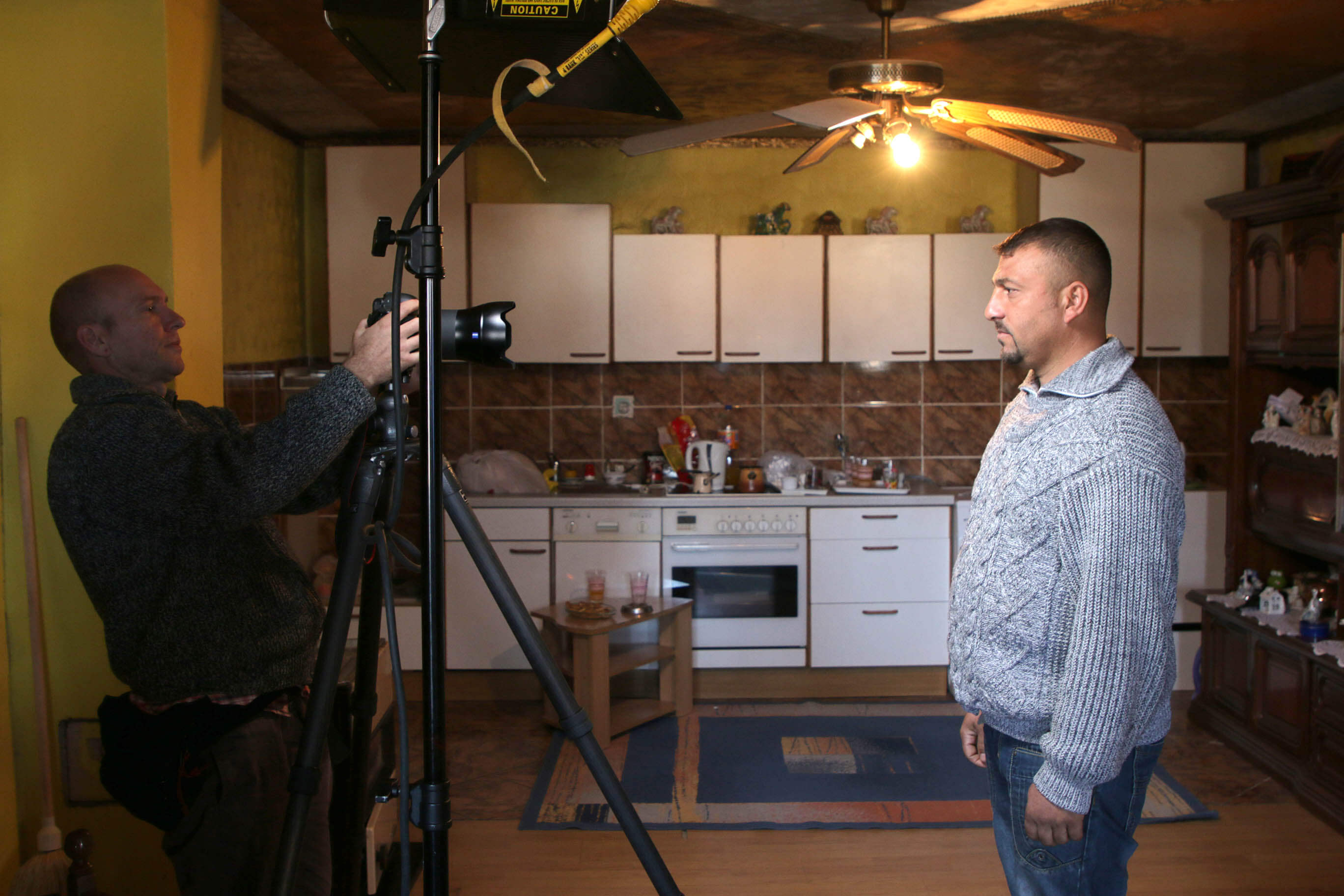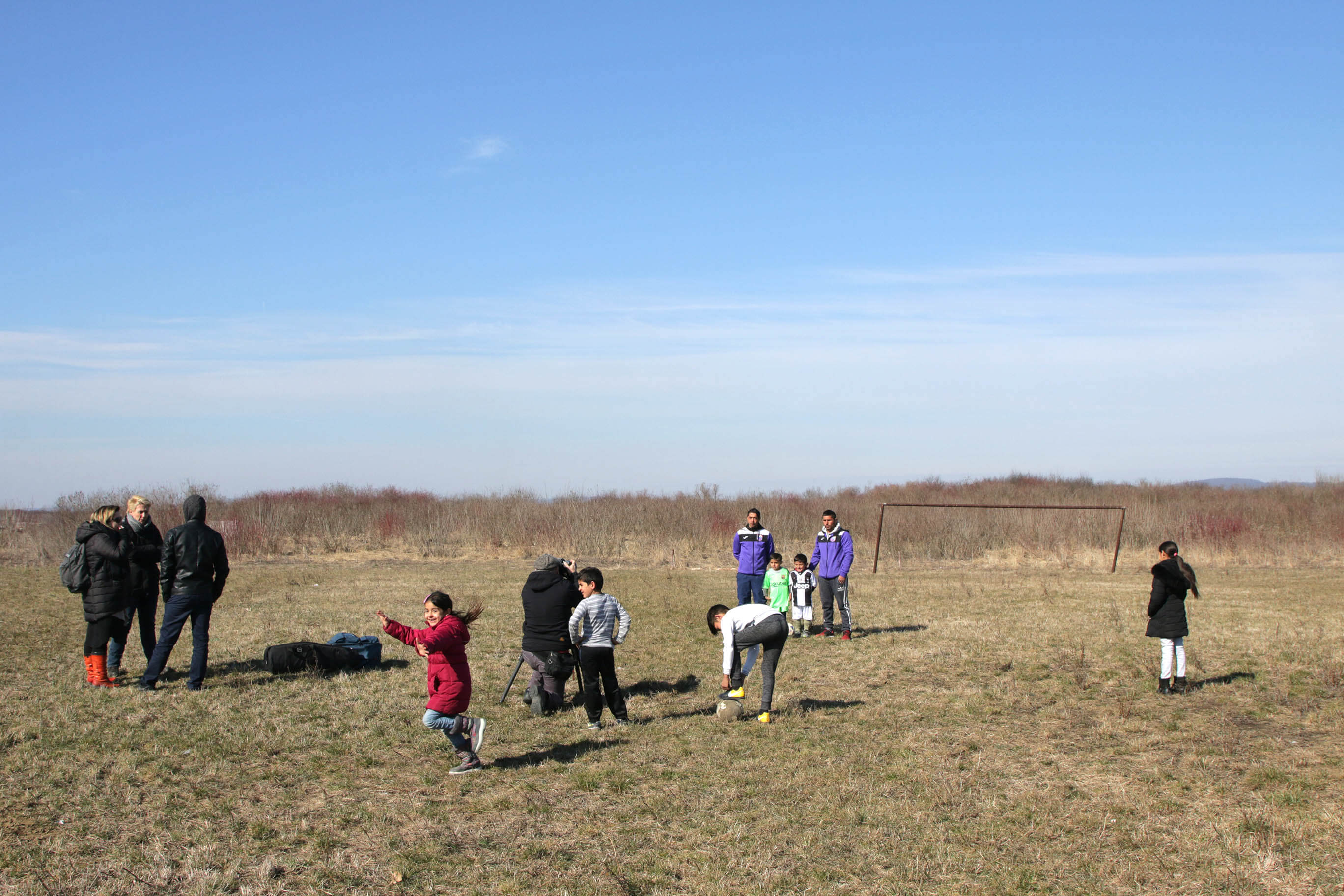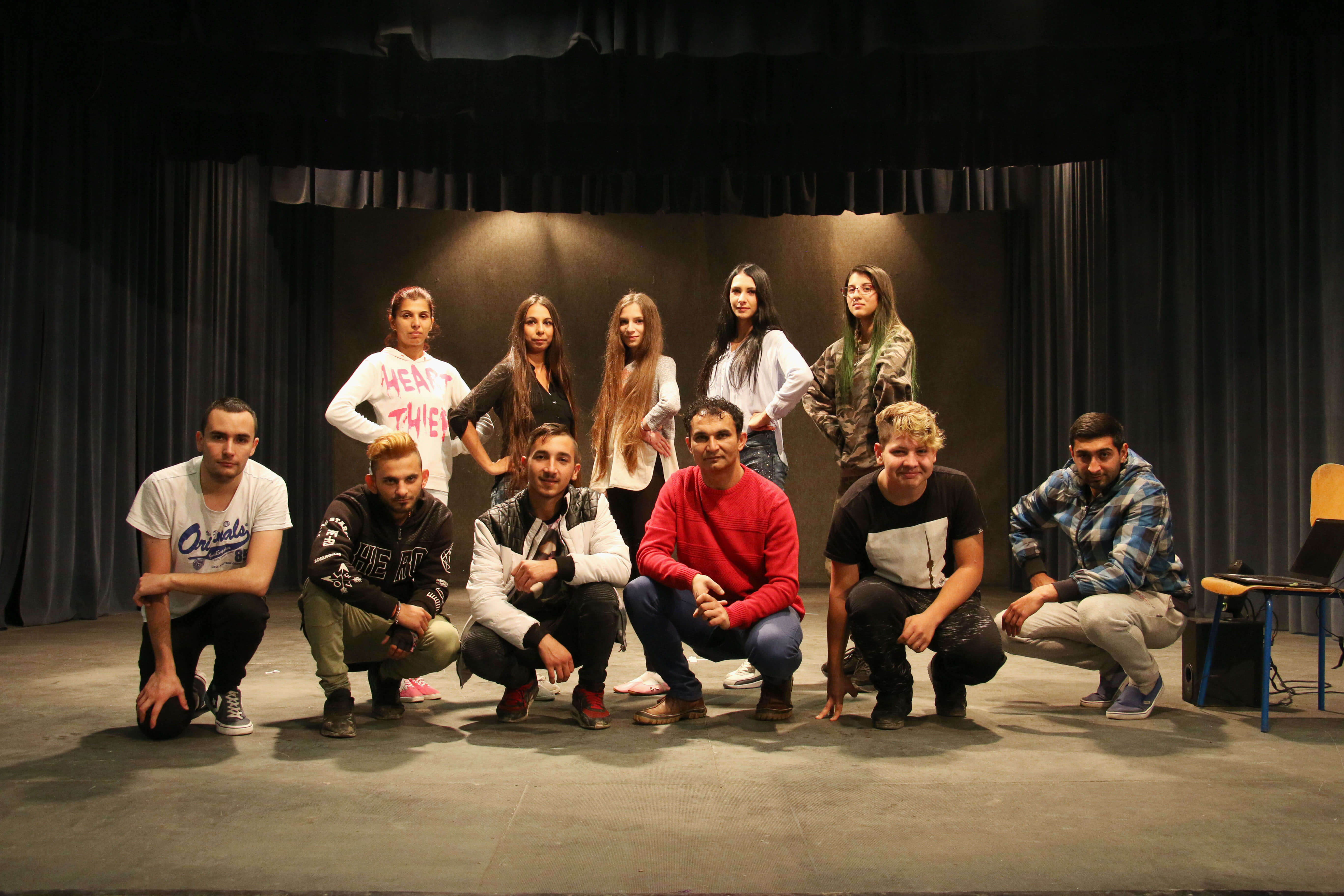In Berlin, there is the Memorial to the Sinti and Roma Victims of National Socialism. The memorial consists of a dark, circular pool of water at the centre of which there is a triangular stone. The triangular shape of the stone is in reference to the badges that had to be worn by concentration camp prisoners. There are also plaques with the names of the concentration camps. One of the plaques is Jasenovac, a concentration camp in Croatia.
Yet, revisionism and the negation of the genocide over Roma in Croatia have become a part of media culture. This forgotten genocide is reflected today with daily marginalisation suffered by the vast majority of Roma.
The exhibition Stories of the Roma People presents 18 personal stories of members of the Roma community who inhabit Slavonia and Baranja, a region in Croatia.
Today, the fact that the official census cannot determine how many Roma people live in Croatia, tells a lot about their status, often hiding their origin as a survival strategy. International Roma Day on April 8 is widely seen as an opportunity to celebrate Romani culture, to raise awareness of the issues concerning around 15 million Roma people worldwide and to highlight the discrimination that Roma people face in different areas of life. Croatia is no exception. There, it is one of the biggest but perhaps the least visible problems of contemporary Croatian society.
A recent study, conducted in collaboration between the Centre for Peace Studies Zagreb and the Government Office for Human Rights and the Rights of National Minorities financed by the European Union, shows how deep the prejudice is rooted in Croatian society. For instance, according to the study, 28% claim to have experienced discrimination at least once in the previous year, and 17% said they experienced a physical assault during life only because they were Roma.

Last Tuesday, the exhibition “Stories of the Roma People” was opened in the city of Osijek, in the eastern Croatian region of Slavonia. The exhibition is a part of a larger project known as the Museum of Personal History of the Roma People, financed by the European Social Fund and Ministry of Culture – Art and Culture for Youth in Croatia. The project is coordinated by Fade In Productions, a Zagreb-based platform for film and video focused on socially engaged topics, in partnership with the Roma Resource Centre Darda. The project and exhibition were inspired by the lack of written history of Roma in Croatia.
“On one hand, we wanted to respond to this disadvantage and, secondly, to give young Roma access to cultural content and participation in creating them. We have been collaborating with Jovica Radosavljević from the Roma Resource Centre Darda for a while, and many times we would come to the conclusion that the current generation of Roma in Croatia should not miss the opportunity to record the stories of those who can say something about the Roma past and tradition, and about the present situation in the community,” says Željka Kovačević, the president at Fade In.
“At the beginning, we were fantasizing about the museum/documentation center, but it was overwhelming. When colleagues, screenwriter Martina Globočnik and director Miroslav Sikavica, got involved in the process, we decided to focus on personal stories and history,” Željka continues.
The exhibition “Stories of the Roma People” presents 18 personal stories of members of the Roma community, primarily belonging to the subgroups of Muntenci/Munćani, Ludari and Ardeljani/Erdeljci of the Bayash branch, who inhabit Slavonia and Baranja, a region in Croatia. Even though they differ from one another – their personalities, experiences, and lives are also different – these stories, together making up a whole, provide direct insight into contemporary life and the issues faced by communities to which the storytellers belong.
The current generation of Roma in Croatia should not miss the opportunity to record the stories of those who can say something about the Roma past and tradition, and about the present situation in the community.
This is not the first time that Fade In has worked with the Roma community. It would be impossible to realise this project without the confidence of the community, built on trust. The process behind the project was very specific, yet spontaneous and open. They conducted a survey and interviewed around 100 people from Slavonski Brod, Darda, Bolman, Belišće, Bistrinac, Beli Manastir, and Torjanac, and later selected 26 stories for the website and 18 stories for exhibitions in Osijek and Rijeka.
The project has several dimensions, combining stories, the exhibition, and education. One of the main tasks of this exhibition, through personal stories of Roma people from different age groups, backgrounds, and experiences, is to contribute towards breaking the prejudice and integration of Roma into the wider community. Their stories will also be recognized through the wider socio-political-social context of the society in Croatia, constantly struggling with the challenges of integration and respect for diversity.

However, Željka points out that the importance of their work is not only in the final exhibition. “Through the period of 18 months, sixteen young Roma aged 15-25, from Darda and Slavonski Brod, have been educated about creative knowledge providing them with skills for audiovisual recording, conducting interviews and film editing. Therefore, the project directly aims to involve young Roma in cultural activities.”
Personal histories and stories seemed to us the best tool to give the Roma community the opportunity to leave a trace.
Željka agrees that having the advantage of private relationships and professional cooperation with people from the Roma community was essential for such a project, “As authors, we are not ethnologists nor anthropologists or historians. Personal histories and stories seemed to us the best tool to give the Roma community the opportunity to leave a trace.”
It is easier to feel connected with personal stories. “On the other hand, these stories have left enough room to connect them with the broader socio-political contexts and point out the problems of the contemporary Roma community in Croatia,” she continues. And life for the contemporary Roma community in Croatia, just like in the past, hasn’t been an easy one. Roma people are stigmatised every day and the vicious circle continues: they cannot get work and may end up on the streets begging, meaning that stereotypes are confirmed. But Željka is hoping that stories behind this project offer a different perspective. “Roma people and other minorities are not isolated individuals whom someone needs to “know how to handle”, we are all part of the community and, without them, our community wouldn’t exist. I want to believe that we can all contribute to the integration process and participate in creating a society that respects its diversity.”

In media, portraying everyday life of Roma people often falls into the trap. Their customs end up repeatedly shown with the exoticizing filter. This project, in particular, claims the team behind it sought to avoid the romanticization of their everyday life and a context in which they are often placed.
“Every community is made up of the people who live in that community. If we exclude some of the members, we deny the opportunity to experience the richness and fullness of that community. Then we exclude ourselves,” concludes Željka.
![Political Critique [DISCONTINUED]](https://politicalcritique.org/wp-content/uploads/2015/09/Political-Critique-LOGO.png)
![Political Critique [DISCONTINUED]](https://politicalcritique.org/wp-content/uploads/2015/09/Political-Critique-LOGO-2.png)